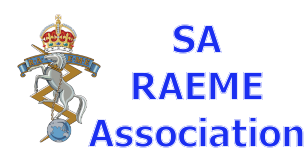General
49. At the outbreak of war in 1939, Australian Army Ordnance Corps (Permanent) were engaged in training tradesmen at WOODSIDE who had enlisted in the Australian Imperial Forces. They were posted to Light Aid Detachments and Workshops formed in this and other states on completion of their training. Six officers were recruited from civilian industry, but four of them were recalled owing to the shortage of trained civilian engineers.
50. About that time Lieutenant McEWIN was the Senior Ordnance Mechanical Engineer (SOME) in 4 Military District. Lieutenant CUNNINGHAM was later transferred from Army Headquarters MELBOURNE to take over from Lieutenant McEWIN, and Lieutenant DUNCAN took over the Mechanical Transport Workshops at WAYVILLE
4 Military District Workshop
51. The 4 Military District Workshop strength at 1940 was 1 officer and 60 other ranks, which included the following:
| a. | Officer Commanding | 1 |
| b. | Clerks orderly room and technical store | 3 |
| c. | Armourers | 5 |
| d. | General Engineering Section | 12 |
| e. | Instrument Section | 2 |
| f. | Electrical Section | 2 |
| g. | Blacksmiths and Strikers | 4 |
| h. | Carpenters | 5 |
| i. | Welders | 2 |
| j. | Vehicle Repairs | 4 |
| k. | General Duties and attached | 11 |
| l. | Painters | 2 |
52. From 1934 to 1940 Colonel RAINBIRD was Chief Ordnance Officer and Captain SORREL was officer commanding Australian Ordnance Corps (Militia) from 1938 to 1940. Private B. WOOLLARD was the first Army apprentice in 4 Military District.
53. During that year the Railways Workshop at ISLINGTON was manufacturing Bren Gun Carriers and Armoured Cars. A convoy of twelve of these armoured cars was driven through ADELAIDE and led by Major (later Brigadier DEME) MORAN, en route to VICTORIA.
54. Captain Oates, a Royal Australian Engineer officer from Army Headquarters, set up an office in the Ausralian Army Ordnance Corps (Permanent) workshop. From this office he purchased from local sources all hand tools and major machine tools for all Army repair organizations in 4 Military District.
55. At the outbreak of the 1939 45 War, Royal Australian Navy Ordnance Artificers, who were normally stationed at BIRKENHEAD, were required at sea. Because of this, the RAN requested the services of Armament Artificers from 4 Military District Workshop to inspect and repair guns fitted to merchant ships, when these ships berthed at PORT ADELAIDE. The artificers selected were Staff Sergeant (now Captain) G. OAKES and Armament Quartermaster Sergeant (later Major) A.L. GANNON. A Gunnery Chief Petty Officer, RAN, accompanied the artificers during these inspections. Guns inspected and repaired were 4" Mark 5 and 6" Mark 7 naval mountings, and 3" anti aircraft guns.
56. The Australian Army Ordnance Corps (Militia) depot at KESWICK was used as a trade training centre and was later moved to WAYVILLE.
57. In 1939 Lieutenant S. REEVES was the Officer in Charge of 4 Military District Workshop. Because of the expansion required for repair facilities at this time, the Motor Transport Repair Section of 4 Military District Workshop was moved to WAYVILLE Showgrounds. The General Engineering Section which catered for the repair of General Engineering Equipment, Guns, Instruments, Telecommunications, Small Arms, Textile and Boot Repairs, remained at KESWICK.
58. In late 1940 Lieutenant H. CLARKE replaced Lieutenant S. REEVES. Later, in 1941, the Ordnance Workshops had a representative on 4th Military District Headquarters. This position was held by Major L. CUNNINGHAM, who filled the position of Senior Ordnance Mechanical Engineer (SOME). The Senior Ordnance Mechanical Engineer and his staff were located in a civilian house on the ANZAC HIGHWAY opposite KESWICK Barracks.
59. In September 1941, 4th Military District Workshops became known as the South Australian Line of Communication Workshops (SA L of C Wksp). The establishment was increased and Captain MACHIN became the Officer in Charge and Lieutenant H. CLARKE returned to VICTORIA. During this period, personnel were exchanged with tradesmen serving in the Ordnance Workshop elements located in NORTHERN TERRITORY.
60. By late 1942, Ordnance tradesmen became a separate Corps, and Australian Electrical and Mechanical Engineers was added to the name of the Workshop, which then became known as the South Australian Line of Communication Workshop Australian Electrical and Mechanical Engineers. At this time, anti aircraft batteries and search light companies were located at WHYALLA and DRAPER. Consequently, a new element of Australian Electrical and Mechanical Engineers was raised and became known as Headquarters 9th Australian Anti Aircraft Workshops.
61. Capt. G. MACHIN was replaced as Officer in Charge Workshops in February 1943 by Major J. SILCOCK, who returned from NORTHERN TERRITORY. Major SILCOCK was later replaced by Capt. M. DOIG, who continued as Officer in Charge until mid 1945.













